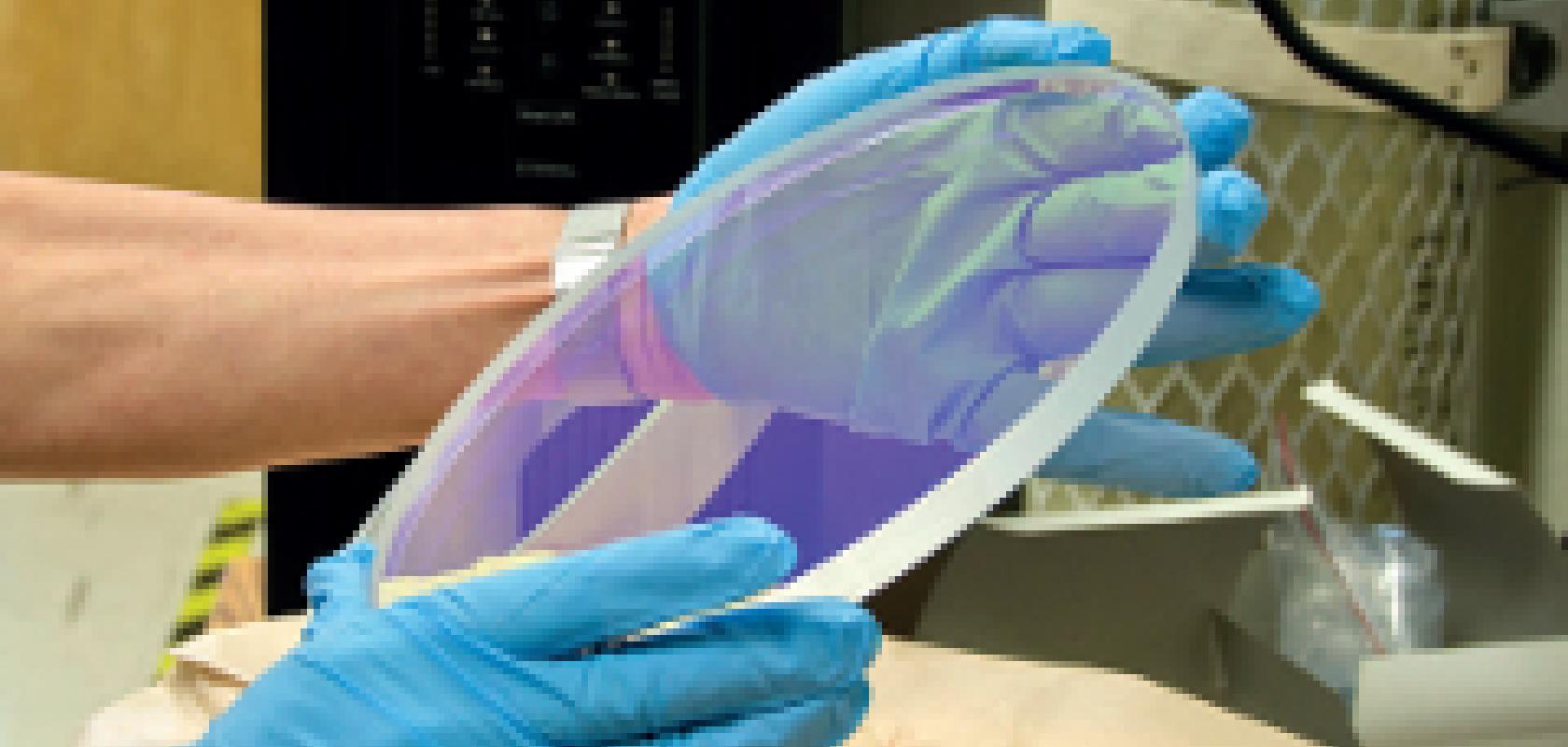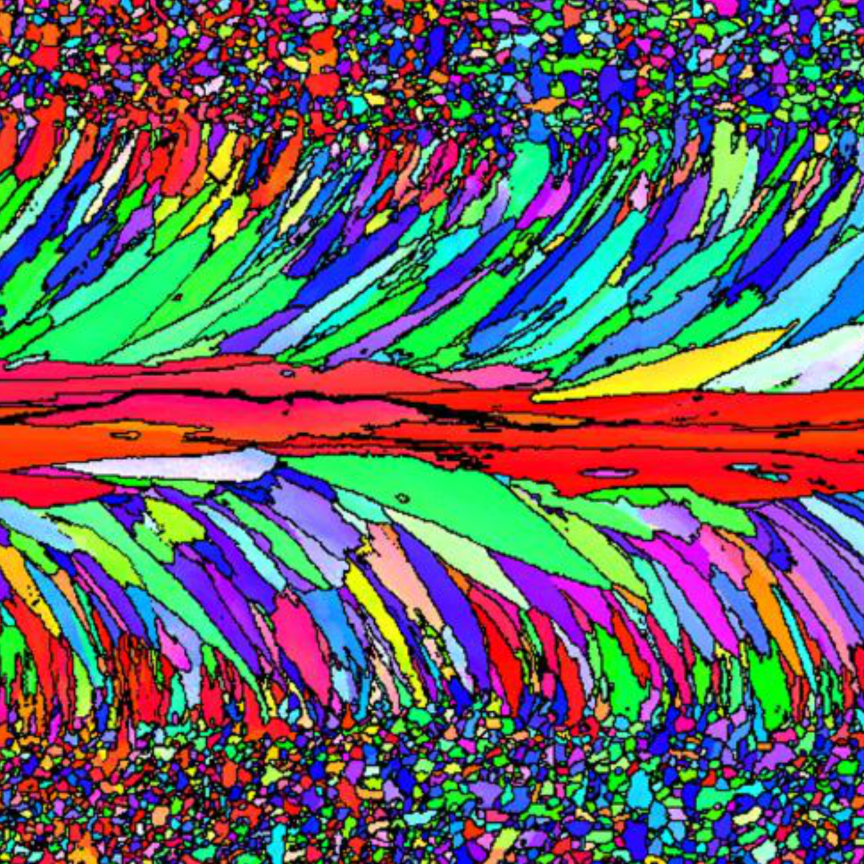Kilowatt-class fibre and disk lasers are now becoming more commonplace in industrial manufacturing – IPG offers fibre lasers up to 50kW output power. So, how are such high energy density laser beams calibrated?
There are, of course, ways to measure the power and beam profile of high-power lasers, although the different methods will have their pros and cons. The National Institute of Standards and Technology (NIST) in the USA has developed one method referred to as the flowing water power meter, which is designed for use at kilowatt and multi-kilowatt power levels. The standard is based on measuring the heat absorption of water.
The NIST’s power meter has a conical cavity coated with a high damage threshold absorber. Laser light is absorbed by the cavity, which heats up. The laser power is then calculated by measuring the temperature difference of the water used to cool the cavity at a known flow rate.
Ophir Photonics released a power meter for measuring up to 100kW lasers at Photonics West earlier in the year, which is based on the same calorimetric principle. Thermopile technology, which is the alternative and works by absorbing the power and measuring how fast it radiates out, is unsuitable for really high powers.
‘Water absorbs heat very nicely and so if you know the temperature difference and you know the flow rate then you can measure pretty precisely the amount of power the water has absorbed,’ explained Gary Wagner, general manager of Ophir Photonics. Ophir’s calorimetric power meter takes about 40 seconds for the measurement to stabilise.
NIST has been working on a novel alternative to using the heat absorption of water to measure power: physically weighing the laser beam. NIST researchers John Lehman and Paul Williams developed the method for gauging high-power lasers, which works by measuring the radiation pressure generated by the beam.
‘This is a clever and promising approach for determining the power of high-power lasers,’ said Dr Marla Dowell, leader, sources and detectors group at NIST. The method works by placing a mirror on an off-the-shelf, high-accuracy, mass scale. When the light bounces off the mirror it imparts a force to that scale which can be thought of as an equivalent mass.
Lehman and Williams have used this method to measure the power in a 90kW CO2 laser. In their calculations, a 530W fibre laser’s radiation force equated to 0.3 to 3µN (0.03 to 0.3mg). The radiation pressure method works with any laser wavelength; it’s just a case of optimising the mirror to the wavelength.
‘The reason why this approach is really interesting is that it could potentially be used to perform in-line measurements during laser manufacturing processes,’ Dr Dowell said. ‘The previous approach of measuring thermal conversion in water is more accurate, giving a better than one per cent accuracy; however, since you’re absorbing all of the laser energy, you can’t use it for anything else. Since the new method bounces light off a mirror, you can in principle then use that reflected light for something else.’
The mirror has to have a very high damage threshold and it has to be optimised to have a high reflectance. Dowell noted that a mirror that is 99.9 per cent reflective will still absorb 0.1 per cent of the light, and at 1kW that’s quite a bit of power.
‘We’ve been in talks with a couple of different companies regarding commercialising this method. There’s also a patent pending on the technology,’ Dowell said.
‘I’m seeing a lot more requests for high-power beam measurements from people in the laser materials processing community, such as laser welding and laser cutting. That’s a big growth area,’ she remarked. ‘Laser welding, in general, has the potential for both lower cost and reduced environmental impact than traditional welding methods, such as arc welding. That’s one of the drivers. We hope that more accurate measurements of high power laser parameters will help expand the use of laser welding into new applications,’ she said, giving the examples of welding dissimilar metals or non-metallic materials.
Dowell said that NIST has candidate methods based on the radiation pressure method for looking at beam quality, but that work is ongoing at the moment.
Beam analysis gives end-users a better understanding of laser power, beam quality and temporal profile, as well as lots of other parameters in order to optimise the process. The advantage of the NIST radiation pressure method is that it can be used for in-line monitoring of laser power during material processing. Duma Optronics has released an optical beam sampler for high-power lasers that attaches to its beam analysers, which can be used to sample the beam from high-power systems in-line, during production. The Nesher, Israel-based company has so far tested the sampler up to 5kW of power, but, according to the company’s calculations, it would theoretically work at up to 100kW.
‘The sampling is very accurate; it can sample 1/100,000 of the beam without distortion. It is exactly the same beam, but with a fraction of the energy,’ said Oren Aharon, technical director at Duma Optronics.
A standard method for profiling high-power laser beams would be to image it onto a camera sensor. So as to not damage the sensor, the overall power needs to be reduced using multiple optical wedges and attenuators. The wedges would reflect a small percentage of the beam, which, after a number of these optical components, reduces the power to a few milliwatts before making the measurements directly using a camera.
‘There are issues with doing this with higher powers,’ explained Wagner at Ophir Photonics. He said that passing large amounts of power through a wedge could cause it to heat up, which would result in some distortion.
Aharon said Duma’s beam sampler is non-distorting and preserves the polarisation of the beam. Compressed air is used to cool the system, along with preventing thermal lensing and also keeping the optics free from dust and particles.
The system is able to measure power at a rate of five readings per second, faster than water-cooled power meters that work by measuring the difference in temperature of the water caused by the laser beam.
The sampler can be attached to a knife-edge beam analyser, which scans the beam in real-time and is able to measure high-power beams from deep UV to 2.7µm. Duma also produces camera systems, but the measurement is not as accurate as with the knife-edge detectors – knife-edge detectors have an accuracy of fractions of microns in terms of beam position and size, while camera systems are generally around 5µm, depending on the pixel size of the sensor. The analysers can measure power, position repeatability, beam size at the focal plane, and horizontal and vertical beam profiles.
Duma has recently supplied analysis systems to a large car manufacturer in Japan. The manufacturer wanted to analyse the beam within the production process. ‘They put several of our systems on the production line and from time to time direct the robot arm with the laser at the analyser for in-line calibration of power and position,’ explained Aharon. ‘In this way, the system identifies faults in the laser head before it is used to manufacture lots of parts. There is a real need for in-line measurements.’
The system, as it stands though, is only tested to 5kW power. ‘We get enquiries for beam analysis equipment for 10kW and 15kW beams, which, unfortunately, we’re unable to test,’ said Aharon. ‘We are working on that though and will probably upgrade our system to those levels in the future. We believe our technology could be scaled up to 100kW, but we don’t have easy access to these kinds of very high-power laser systems in order to test the beam analyser. We recently got a request for this type of application from a British laser centre, which we’re currently in talks with to try and solve the beam analysis requirements for a 15kW laser.’
Ophir Photonics has also recently released a beam analyser for profiling high-power YAG and fibre lasers. BeamWatch measures beam characteristics like waist, M2, and focus spot location, not by sampling a small portion of the beam directly, but by measuring the Rayleigh scatter around the beam. ‘Because of the principles of how the beam profiling system works there’s no upper limit on the power of the laser,’ commented Ophir’s Wagner. The profiler has been tested at 100kW power.
‘Measuring beam characteristics from its Rayleigh scatter means the instrument doesn’t disrupt the beam at all,’ explained Wagner. All the profiling characteristics like waist, focus spot location and divergence are determined without the beam touching the instrument.
Rayleigh scatter is the reason the sky is blue. As light moves through the atmosphere, most of the longer wavelengths pass straight through, while the shorter, blue wavelengths are absorbed by the air molecules and radiated in different directions.
BeamWatch uses a camera imaging the pass-through laser beam, with sensitivity between 980 and 1,080nm, which is the area where high-power YAG and fibre lasers radiate.
‘There are so few locations with 100kW lasers right now,’ commented Wagner, ‘but there are lots of users in the 1-30kW range where these beam analysers would be useful.’
Ophir has tested BeamWatch at several different sites using high-power lasers, including IPG Detroit and the Edison Welding Institute (EWI) in Columbus, Ohio. According to Wagner, both of these organisations, IPG in particular, are very interested in characterising the beam, particularly during development of high-power fibre lasers and in final test and manufacture. ‘There are direct characterisation methods up to 15kW of power, but there isn’t a direct measurement technique for anything more than that,’ he said.
‘High-power laser beam test and measurement is one of the key market areas that our company is focusing on for the future,’ Wagner added. ‘We see these high-power fibre lasers being accepted more and more. It’s because the costs have come down so dramatically.’
Wagner commented that a lot of the work for the Rayleigh scatter technique has gone into improving signal-to-noise ratio, as Rayleigh scatter at these wavelengths is a weak signal. ‘The physics behind Rayleigh scatter is that with shorter wavelengths you don’t need very much power, but as we go to 1,064nm wavelengths and above it becomes more difficult,’ Wagner remarked.
‘We’re still working on how we use this technique for CO2 lasers. We targeted this high-power fibre area and spent engineering time optimising the profiler for that particular wavelength. CO2 lasers will be the next step.’
 Greg Blackman is the editor for Electro Optics, Imaging & Machine Vision Europe and Laser Systems Europe.
Greg Blackman is the editor for Electro Optics, Imaging & Machine Vision Europe and Laser Systems Europe.
You can contact him at greg.blackman@europascience.com or on +44 (0) 1223 275 472.
Find us on Twitter at @ElectroOptics, @IMVEurope, and @LaserSystemsMag.


